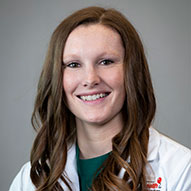Dallas
214-456-7697
Fax: 214-456-7901
Plano
469-303-3000
Fax: 469-303-4520
Frisco
469-303-3000
Fax: 469-303-4520
Prosper
469-303-3000
Fax: 469-303-4520
A fracture is a partial or complete break in the bone. It occurs when a bone is subjected to more force than it can absorb – typically from a fall, or trauma, or a direct blow to the body.
214-456-7697
Fax: 214-456-7901
469-303-3000
Fax: 469-303-4520
469-303-3000
Fax: 469-303-4520
469-303-3000
Fax: 469-303-4520
Fractures vary from mild cases where surgical treatment is not required to more serious cases where it is. The good news is that fractures in children tend to heal fast. The younger your child, the faster healing will occur. That’s because children’s bones are still growing, which makes them softer and more flexible. Their bones will buckle or bend before completely breaking.
Still, forces applied to bones can be too strong, and the bones will indeed sometimes break, requiring medical treatment. At the Children’s Health, our pediatric orthopedic specialists have extensive training to diagnose and treat bone fractures with advanced, effective techniques that support your child’s skeletal growth and development.
Most fractures in children are incomplete fractures, with the bone cracking or only partially breaking. Incomplete fractures include:
As bones mature, complete bone fractures — where the bone breaks into two or more pieces — are more likely. Complete fractures include:
Other common pediatric fracture types include:
The most common fracture symptoms include pain and/or swelling and obvious deformation in the injured area (accompanied by warmth, bruising or redness), and difficulty using or moving the injured area in normal fashion.
Common fracture symptoms include:
At Children’s Health, our orthopedic physicians will examine your child, assess pain and use imaging to diagnose the problem. Our physicians use the latest in diagnostic technology to develop a comprehensive treatment plan which can often diagnose a fracture with just a physical exam and an X-ray.
Diagnostic testing may include:
Fractures occur when more force is applied to the bone than it can absorb. Fractures are typically caused by falls or trauma, or a direct hit to the body.
Fracture risks increase during adolescence, with the arms being the most common fracture location. Risk factors for fractures include:
At Children’s Health, our treatment goals for your child include controlling pain, promoting the healing process, preventing complications and restoring the normal use of the fractured area.
We offer the full range of treatments for fractures. After diagnosis, your physician will consult with you and then recommend the best approach for your child. Treatment options depend on the nature of the fracture and your child’s age and skeletal development.
Treatment options may include:


















An overnight stay is usually not required. If your child has a serious fracture that requires surgery, we may recommend an overnight stay.
It depends on the severity of the fracture. The good news is children’s bone fractures heal quickly because their growing bones are rapidly generating new tissue. As children age into their teenage years, though, the speed of healing starts to slow down.
Broken bones are a common pediatric injury because parts of children’s bones called growth plates are weak as they grow. However, you can help your child build strong and healthy bones by encouraging a diet high in calcium and vitamin D.
Learn more about fracture care in children: